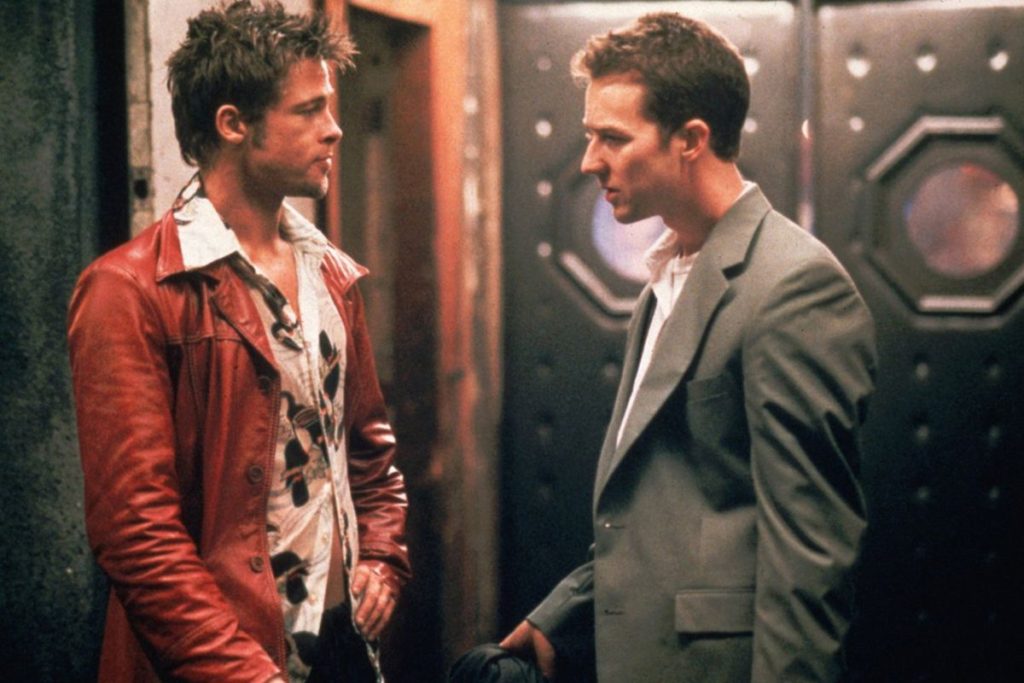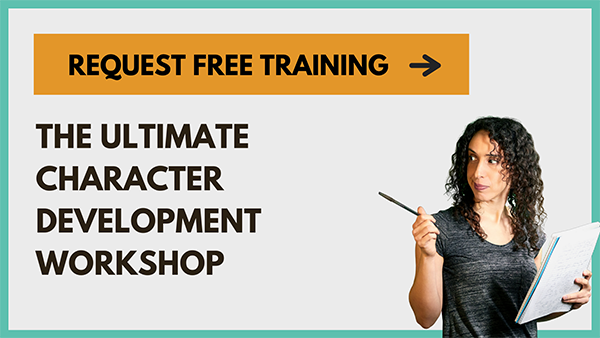
When I was newer to writing, I used to write wonderful characters and dialogue but I knew nothing about how to write a storyline. I wrote from the heart, I wrote personal stuff, personal even when it was couched in fiction.
How can a script be so boring when the characters, relationships and dialogue are so friggin’ great?
Even the most interesting characters in the world can’t make up for there not being a plot. So let’s put that problem to bed right now:
#1) The secret to writing great plots is your character’s goal.
If you’re not clear on what your character wants, you’re dead in the water. (Snooooooze…) Check out my article on “Character motivation: how to flesh out a character by writing less.”
Also, if your character wants some lofty, existential, intangible and immeasurable thing, like self-respect, or her mother’s approval, or peace of mind – also dead in the water. These are fine things to want, but they don’t create plot.
What creates plots are tangible, measurable goals – meeting them is yes or no question:
- Find the treasure
- Escape the prison
- Marry that hamster (My brain just fell into an animated musical. Hang in there with me…)
Whether or not Muffy marries that hamster is a yes or not question. They’ll either get married or they won’t.
That super, clear yes-or-no question is what keeps the pages turning, and what keeps the audience from watching.
WRITING PLOTS IS DIFFERENT FROM HAVING AN IDEA FOR A STORY.
Many (most?) writers stop at having an idea for a premise and then dive in. Not so fast.
A story premise is not a plot:
- Son meets up with estranged dad.
- Artist decides to go after her dreams.
- Child in turmoil due to parents’ separation.
How might we turn these story premises into plots?
- Son must help his estranged dad find a job. (Clear, tangible, external, measurable goal? Yes. He’ll either find him a job or he won’t.)
- Artist tries to get the band back together for another concert.
- Child hatches a plan to bring her parents back together again.
These characters might fail at meeting their goal. But they have a goal, and therefore they have a plot. These plotty goals create a home for the premise.
If a story premise is your choo choo train, the goal your character pursues, in other words – the plot – are your story’s train tracks. Without the plot, the train can’t move and nobody goes nowhere.

#2) WRITE A STORYLINE BACKWARDS: BEGINNINGS BELONG AT THE END.
Confession: I was home alone when I first watched Fight Club. As soon as the credits rolled, I went back to the beginning and watch it all over again. It’s a different movie once you know the story (but shhhh! don’t talk about Fight Club!)
A common mistake that newer writers make is in stuffing a backstory into the beginning of a script before starting the story.
Don’t be that guy. Your story should begin where the story begins, and not a moment before. If there are things we really need to know about your character or their world, tell us all about it while they’re off on their journey.
Not only does starting where the story starts hook us right in (have I mentioned that most reader don’t read past the first 5 pages?) but this also gives you the opportunity to rattle us with the backstory when we least expect it: later.
The longer you hold off on giving us information, the more powerful that information becomes when you do reveal it.
Examples:
A girl breaks every rule and gets into endless trouble in order to piece together twenty dollars so she can buy her dad a bag of his favorite cookies.
We think: wow, she must really like her dad. She must also really like these cookies!
We learn at the end that her father is in jail and that she doesn’t want to visit on his birthday empty handed. Boom. Everything changes. We have that bone-chilling ah-huh moment and her entire journey comes into focus as we realize what had been at stake all along.
A man does everything in his power to get his estranged and son to talk to him. We learn at the end that this man has a few weeks left to live. Boom. All the efforts we’ve been watching him make now make sense.
You get the idea. The longer you hold off on giving us information, the more powerful that information becomes.
If you haven’t yet, I invite you to watch my film Tomorrow Ever After, where I placed Milton’s backstory where backstories belong: at the end. I use this “trick” in almost every one of my scripts.
If I don’t use it in the first draft, then as I rewrite the script I think about what information I keep out of sight till later in the story.
Sometimes I figure out while writing the end what has been going on all along. I then rewrite the beginning (if not the entire script!) in light of my own, new revelation about the backstory.

#3) WRITING ACTION-PACKED PLOTS: THE GOOD-NEWS BAD-NEWS FLIPFLoP technique
One of my favorite tips that I got from action film writer, William Martell, is his famous good-news bad-news trick.
That’s the key to action sequences. “Phew! We got out of that one. Oh no! Trouble is still around. Or trouble has gotten worse!” Over and over.
Lemme improvise and write a quick action scene right now:
EXT. KITCHEN – DAY
LOMA, 6 years old, notices that she’s alone in the kitchen. She looks every which way: yup. She’s alone. So naturally: she eyes the cookie jar that stands perched atop the refrigerator. Yessss. This is the day that she’s been waiting for. (yay!)
Loma, slides a chair over to the fridge. She eyes the jar: just a short moment away from the gold! She gets up on that chair. Reaches up!
Too short. Urgh. (oh no!)
She dismounts, slides the chair aside, leaves the kitchen, and returns with a stool. Much taller! Yes. Her day has come. (phew!)
She climbs up on the stool. She reaches up! Perfect height! She HEARS MOM! (Uh oh!)
She hurries off the stool but her foot can’t quite touch the floor! Mom’s voice draws nears!
Foot hits the floor as mom enters.
MOM: Whachu doing bear?
Loma sits on the chair that she dragged over previously and pretends the stool is a steering wheel.
LOMA: Driving a car…
Mom smiles lovingly. Aaaaah. What a perfect daughter she’s raising. Mom leaves. (woot!)
Loma dashes up, climbs the stool in haste, grabs the jar, it’s in her hands!
BAM! The jar falls to the floor and smashes to pieces. (Arrrgh!)
MOM: (OS) You OK?!
Mom rushes in.
Loma sits on top of the smashed cookie jar, her big dress covering the scene of the crime.
LOMA: Yeah.
MOM: What are you doing?
LOMA: I’m a merry-go-around.
Mom shakes her head in amusement.
MOM: Just put everything away ok?
LOMA: Yup. (Phew!)
MOM: What’s that…?
LOMA: What?
MOM: Some brown smudge on your chin…? Is it mud…?
Mom comes to inspect. (grrrr)
Just as mom comes near to inspect, the phone rings and mom gets distracted. (Hurray!)
Whether you’re running away from a 30-foot monster, or stealing a cookie: the back and forth between oh-no! moments and phew! moments will keep your audience at the edge of their seat.
Next time you binge watch Breaking Bad you’ll see that the entire series is a good-news-bad-news rollercoaster.
If you write action flicks, you should learn about creating high octane action sequences. If you don’t write action flicks, you should definitely learn how to create action sequences.
Movies aren’t about what people say. They’re about what people do. No matter the genre, it’s all about the action.
LAST WORDS: WRITING CHARACTER-DRIVEN PLOTS
Having said all of the above: nobody watches a movie or a show for a great plot. People watch shows to fall in love with characters and get invested in their relationships with each other. That said:
Character and plot are one and the same.
Who your character is shapes the goals and obstacles that you’ll be placing before them. Simultaneously: the best plots are the result of the decisions that your characters make and not the sum total of what happens to them.
If you haven’t already, click below to join request your (free) membership, and I’ll be sending you an invite to a complimentary online training on Character Development. In this training I go through the process of finding your most interesting characters, and then building plots around them.
Your characters are trains. Plots are the train tracks you build for them so they can move and get places.
Happy writing,
Ela



Writing a movie script called “Bums.” It’s about travel baseball and the journey taken by parents and ball players that endure life lessons.
Writing a movie script about a German Nazi soldier with a heart. All the movies I’ve seen about Nazis show them to be heartless. I’m definitely NOT trying to break a stereotype, but the reason for this man’s good heart is explained in the script as it goes along (close to the beginning, which sets the stage for what happens later). Lest the audience mistake my intentions as sympathy for Nazis (which I really don’t have! Let them burn in hell!), I make sure that the story is believable and the reasons for a unique kind of Nazi lives within a human being who became a Nazi because he wanted to be a soldier, but he didn’t know how nasty they could be. Naive? Yes. But it makes him more adorable to the audience. I was actually inspired by Schindler’s List.
I think Jojo Rabbit portrays a Nazi as a human who’s been messed with. It’s one of my favorite movies.